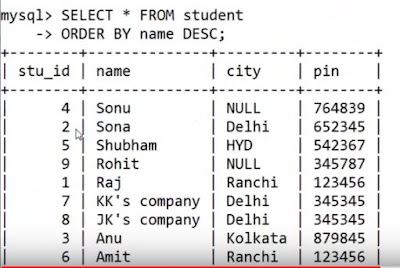If use a auto increment than increase by 1.
In table sequence is increment automatically.
Auto increment ignore null value.
Syntax :-
CREATE TABLE table_name
(
Column_name int NOT NULL AUTO_INCREMENT,
Column_name1 varchar (50) NOT NULL,
Column_name2 varchar (50),
PRIMARY KEY (column_name)
);
Example :-
CREATE TABLE emp
(
Emp_id int NOT NULL AUTO_INCREMENT,
Emp_name varchar (50) NOT NULL,
City varchar (50),
PRIMARY KEY (Emp_id)
);
Insert rule are different
INSERT INTO emp (emp_name, city)
VALUES
('Subham', 'Delhi'),
('Ankit', 'Mumbai');
INSERT INTO emp (emp_id, emp_name, city)
VALUES
(NULL, 'Subham', 'Delhi'),
(NULL, 'Ankit', 'Mumbai');
INSERT INTO emp (emp_id, emp_name, city)
VALUES
(NULL, 'Subham', 'Delhi'),
(1, 'Ankit', 'Mumbai');
Table:-
Use NULL VALUE




















































.png)

.png)













.png)
s.PNG)







.png)













